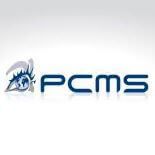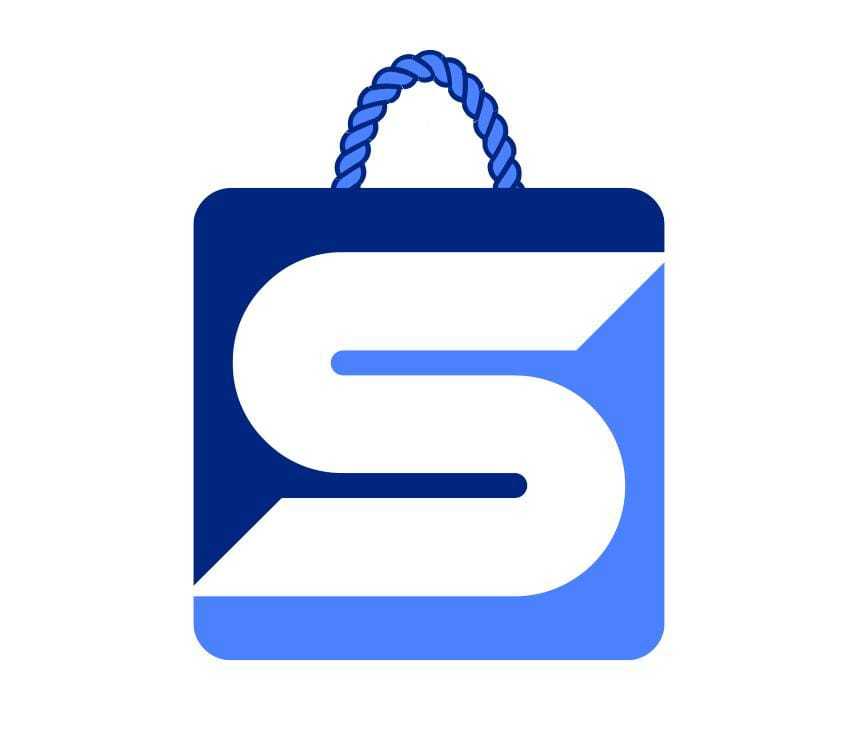Description

Foko Retail

Springboard Retail
Comprehensive Overview: Foko Retail vs Springboard Retail
Foko Retail and Springboard Retail are two distinct platforms designed to serve the retail industry, each with unique functions, target markets, and competitive advantages. Here's a comprehensive overview of both:
Foko Retail
a) Primary Functions and Target Markets
- Primary Functions: Foko Retail is a visual communications platform tailored for retailers to enhance in-store execution and improve communication between headquarters and store teams. Its primary features include photo sharing for visual merchandising, task management, store audits, and real-time communication.
- Target Markets: The platform is primarily aimed at retailers with multiple locations who need to ensure brand consistency and improve operational efficiency. It serves a diverse range of retail sectors, such as fashion, cosmetics, electronics, and more.
b) Market Share and User Base
- Market Share: Foko Retail is a niche player in the retail execution software market, primarily appealing to small to medium-sized retail chains that prioritize visual management and communication.
- User Base: The user base consists of retail professionals, including visual merchandisers, store managers, and sales staff. Foko Retail's appeal lies in its ability to facilitate quick and effective communication across dispersed retail locations.
c) Key Differentiating Factors
- Foko Retail focuses heavily on visual communication, emphasizing the importance of cohesive brand presentation and store layout.
- The platform's mobile-first design makes it particularly attractive to users who require frequent, on-the-go updates and communication.
- It offers a simpler and more visual-centric solution compared to competitors, making it easier for creative teams to use without extensive training.
Springboard Retail
a) Primary Functions and Target Markets
- Primary Functions: Springboard Retail (now known as Heartland Retail following an acquisition) is a cloud-based point of sale (POS) and retail management software. Key functionalities include inventory management, purchase ordering, customer relationship management (CRM), analytics, and a mobile-friendly POS system.
- Target Markets: It targets small to mid-sized retailers across various sectors, especially those looking for flexible, scalable, and data-driven solutions that integrate online and offline retail operations. This includes fashion boutiques, home goods, and specialty retailers.
b) Market Share and User Base
- Market Share: As a part of Heartland's wider suite of solutions, Springboard Retail has gained traction among independent and growing retail brands seeking modernized retail management solutions.
- User Base: The platform attracts retailers who need robust inventory and analytics solutions to improve decision-making and customer experience. Its integration capability appeals to those wishing to unify multiple sales channels.
c) Key Differentiating Factors
- Springboard Retail stands out with its comprehensive inventory management system, enabling real-time tracking and optimization of stock levels.
- The platform is highly configurable, allowing retailers to tailor workflows and reporting to meet specific business needs.
- Its suite of analytics tools provides detailed sales and inventory reports, helping retailers make data-driven decisions to enhance performance and growth.
Comparison Overview
While both platforms serve the retail industry, they address different aspects of retail operations. Foko Retail focuses more on in-store visual communication and operational efficiency, appealing to teams that need seamless visual merchandising. Springboard Retail, on the other hand, offers a robust POS and retail management system with advanced inventory and CRM capabilities, appealing to those who require an integrated, omnichannel retail solution. The choice between them largely depends on whether a retailer is looking for enhanced visual merchandising and communication solutions or comprehensive retail management and analytics functionality.
Contact Info

Year founded :
Not Available
Not Available
Not Available
Canada
http://www.linkedin.com/company/foko-retail

Year founded :
2013
+1 888-347-2191
Not Available
United States
http://www.linkedin.com/company/springboard-retail
Feature Similarity Breakdown: Foko Retail, Springboard Retail
To compare Foko Retail and Springboard Retail effectively, let's break down the similarity and differences in terms of core features, user interface, and unique offerings:
a) Core Features in Common
Both Foko Retail and Springboard Retail are designed to optimize retail operations, and they share a few core features:
-
Inventory Management: Both platforms provide tools to manage inventory efficiently, helping businesses track stock levels, set reorder points, and manage suppliers.
-
Analytics and Reporting: Each platform offers analytics and reporting features that help users monitor sales performance, inventory turnover, and customer behaviors. This aids in making data-driven decisions.
-
Multi-location Support: Support for managing multiple retail store locations from a centralized platform is available, which is crucial for larger retail operations.
-
User Management: Both systems allow for detailed user roles and permissions to ensure secure access control within retail operations.
-
Customer Management Tools: Tools for managing customer relationships and understanding purchasing behaviors are available in both software options.
b) User Interface Comparison
-
Foko Retail: This platform is designed with a modern, visually engaging interface. It emphasizes ease of use, with drag-and-drop features, visual dashboards, and intuitive navigation. It's particularly noted for its mobile-friendly design, enabling on-the-go access for retail employees.
-
Springboard Retail: Springboard Retail also features an intuitive interface, though it leans towards simplicity and functionality. The focus of the UI is to enhance speed and efficiency in operations, ensuring quick access to key functionalities. Its design is straightforward, making it easy for users to learn and employ effectively.
c) Unique Features
-
Foko Retail:
- Communication and Collaboration: Foko Retail differentiates itself with strong communication tools, including messaging and collaboration features, designed to improve in-store teamwork and corporate communication.
- Visual Merchandising: Offers capabilities for managing and auditing visual merchandising plans and execution through photo galleries and task lists.
-
Springboard Retail:
- Open API: Springboard Retail provides a robust API, which allows retailers to integrate the platform seamlessly with other business systems like CRM or ERP solutions, offering more customization and flexibility for tech-savvy teams.
- Omnichannel Support: It excels in supporting omnichannel retail operations, providing tools for handling in-store, online, and mobile sales channels consistently.
These differences highlight how each platform caters to specific needs within the retail management space, with Foko Retail focusing on collaboration and Springboard Retail emphasizing integration and omnichannel capabilities.
Features

Not Available

Not Available
Best Fit Use Cases: Foko Retail, Springboard Retail
Foko Retail
a) Best Fit Use Cases for Foko Retail
Types of Businesses/Projects:
- Retail Operations Coordination: Foko Retail is ideally suited for businesses focused on streamlining retail operations and enhancing communication across teams. This includes companies with multiple store locations that need a centralized platform for operational tasks.
- Visual Merchandising Management: Brands that require strong visual merchandising oversight will benefit greatly from Foko Retail. It's crafted to help ensure consistency and quality across all touchpoints.
- Compliance and Auditing: Retailers that engage in frequent audits and need to ensure compliance with operational standards would find Foko's features particularly beneficial.
Industries:
- Apparel and Fashion
- Consumer Goods
- Specialty Stores
Company Sizes:
- Foko Retail is typically suitable for medium to large retail businesses due to its rich feature set and capacity to handle operations at scale.
Springboard Retail
b) Preferred Use Cases for Springboard Retail
Types of Businesses/Projects:
- Point of Sale (POS) Systems: Retailers looking for a robust and flexible POS solution that can handle a range of transactions, both in-store and online, would find Springboard Retail a strong option.
- Inventory Management: It’s an excellent choice for businesses that need detailed inventory management capabilities, including multi-channel inventory tracking and order management.
- Data-Driven Decision Making: Companies seeking detailed analytics for better decision-making and sales strategies might prefer Springboard Retail due to its analytical tools.
Industries:
- General Retail
- Specialty Retail
- E-commerce
Company Sizes:
- Springboard Retail is typically favored by small to medium-sized businesses due to its scalability and ease of use, but it can also serve larger organizations with its robust features.
Industry Verticals and Company Sizes
-
Foko Retail is particularly tailored for larger, physically expansive retailers who have a strong need to maintain visual merchandising and operational standards across numerous locations. They cater well to industry verticals that involve detailed display and store compliance, such as fashion brands and consumer electronics.
-
Springboard Retail, conversely, offers a flexible and scalable solution that works well for retailers operating both physical and online stores. Its POS and inventory management capabilities make it a good fit for businesses that are gradually expanding or need robust multi-channel selling options. It accommodates a broad spectrum of retailers, from small boutiques to larger franchise operations, enhancing agility and decision-making with analytics.
Both platforms serve retail but focus on different operational aspects and scales, allowing businesses to choose based on their primary needs—be it merchandising management or sales and inventory control.
Pricing

Pricing Not Available

Pricing Not Available
Metrics History
Metrics History
Comparing teamSize across companies
Conclusion & Final Verdict: Foko Retail vs Springboard Retail
To provide a conclusion and final verdict for Foko Retail and Springboard Retail, let's examine the potential value, pros and cons, and recommendations for each platform.
Conclusion and Final Verdict:
a) Best Overall Value
- Springboard Retail might offer the best overall value for retail businesses that prioritize robust inventory management, sales analytics, and multichannel support. Its features cater well to medium to large retail operations needing a comprehensive solution for managing extensive product lines and sales data.
- Foko Retail, on the other hand, could be more beneficial for businesses that emphasize team communication, visual merchandising, and task management. It is particularly valuable for organizations that want to enhance collaboration across dispersed teams.
b) Pros and Cons
Foko Retail:
Pros:
- Collaboration Tools: Offers excellent communication features that enhance team collaboration.
- Visual Merchandising: Provides visual task management which is ideal for retail environments.
- User-Friendly Interface: Known for its intuitive and easy-to-use platform.
Cons:
- Limited Inventory Features: May not offer as comprehensive inventory management as other platforms.
- Scalability: Might not be the best option for very large retail operations with complex needs.
- Learning Curve: Initial setup and adaptation could take time for users unfamiliar with digital collaboration tools.
Springboard Retail:
Pros:
- Comprehensive Inventory Management: Offers robust tools for managing inventory across multiple channels.
- Sales Analytics: Provides detailed analytics and reporting, which are beneficial for decision-making.
- Scalability: Can be scaled to suit large retailers with diverse products and needs.
Cons:
- Complexity: Can be complex to set up and manage, potentially requiring more training.
- Cost: May represent a higher upfront investment, which could be a barrier for smaller businesses.
- Customization: Customizing and integrating with other systems might require additional resources.
c) Recommendations
-
For Smaller Retailers or Those Prioritizing Team Collaboration:
- Foko Retail is recommended for businesses that need a platform focused on improving internal communication and task management. It is ideal for visual merchandising and ensuring that in-store teams are aligned.
-
For Larger Retailers or Those Needing Strong Inventory and Sales Management:
- Springboard Retail is suited for larger operations that require detailed inventory management and sales analytics. It is ideal for businesses that operate across multiple locations and channels.
-
Hybrid Needs:
- If a business requires a strong combination of both task management and inventory capabilities, they might consider integrating both systems or seeking a holistic solution that balances these functionalities.
In conclusion, the choice between Foko Retail and Springboard Retail largely depends on the specific needs and priorities of the business. Businesses should assess their primary operational challenges and choose the platform that aligns best with their strategic goals.
Add to compare
Add similar companies



